1.
Preliminary
The objective of this work is to deal with the rotation-Camassa-Holm model (RCH)
where m=V−Vxx,
in which constant ϝ is a parameter to depict the Coriolis effect due to the Earth's rotation. Gui et al. [9] derive the nonlinear RCH equation (1.1) (also see [3,10]), depicting the motion of the fluid associated with the Coriolis effect.
Recently, many works focus on the study of Eq (1.1). Zhang [23] investigates the well-posedness for Eq (1.1) on the torus in the sense of Hadamard if assuming its initial value in the space Hs with the Sobolev index s>32, and gives a Cauchy-Kowalevski type proposition for Eq (1.1) under certain conditions. It is shown in Gui et al. [9] that Eq (1.1) has similar dynamical features with those of Camassa-Holm and irrotational Euler equations. The travelling wave solutions are found and classified in [10]. The well-posedness, geometrical analysis and a more general classification of travelling wave solution for Eq (1.1) are carried out in Silva and Freire [17]. Tu et al. [20] investigate the well-posedness of the global conservative solutions to Eq (1.1).
If ϝ=0 (implying h1=h2=0), namely, the Coriolis effects disappear, Eq (1.1) becomes the standard Camassa-Holm (CH) model [2], which has been investigated by many scholars [1,6,7,8,16]. For some dynamical characteristics of the CH, we refer the reader to the references [11,12,13,14,15,22].
Motivated by the works made in [4,21], in which the H1(R) global weak solution to the CH model is studied without restricting that the initial value obeys the sign condition, we investigate the rotation-Camassa-Holm equation (1.1) and utilize the viscous approximation technique to handle the existence of global weak solution in H1(R). As the term Vxxx appears in Eq (1.1), it yields difficulties to establish estimates of solutions for the viscous approximation of Eq (1.1) (In fact, using a change of coordinates, Silva and Freire [18] eliminate the term Vxxx and discuss other dynamical features of Eq (1.1)). The key contribution of this work is that we overcome these difficulties and establish a high order integrable estimate and prove that ∂V(t,x)∂x possesses upper bound. These two estimates take key roles in proving the existence of the H1(R) global weak solution for Eq (1.1) without the sign condition.
This work is structured by the following steps. Definition of the H1(R) global weak solutions and several Lemmas are given in Section 2. The main conclusion and its proof are presented in Section 3.
2.
Lemmas
We rewrite the initial value problem for the RCH equation (1.1)
Employing operator Λ−2=(1−∂2x)−1 to multiply Eq (1.1), we have
where
It can be found in [9,10,17,18] that
We cite the definition (see [4,21]).
Definition 2.1. The solution V(t,x):[0,∞)×R→R is called as a global weak solution to system (2.1) or (2.2) if
(1) V∈C([0,∞)×R)∩L∞([0,∞);H1(R));
(2) ‖V(t,.)‖H1(R)≤‖V0‖H1(R);
(3) V=V(t,x) obeys (2.2) in the sense of distribution.
Define ϕ(x)=e1x2−1 if |x|<1 and ϕ(x)=0 if |x|≥1. Set ϕε(x)=ε−14ϕ(ε−14x) with 0<ε<14. Assume Vε,0=ϕε⋆V0, where ⋆ represents the convolution, we see that Vε,0∈C∞ for V0(x)∈Hs,s>0. To discuss global weak solutions for Eq (1.1), we handle the following viscous approximation problem:
in which
Utilizing (2.3) and denoting pε(t,x)=∂Vε(t,x)∂x yield
Simply for writing, let c represent arbitrary positive constants (independent of ε).
Lemma 2.1. Let V0∈H1(R). For each number σ≥2, system (2.3) has a unique solution Vε∈ C([0,∞);Hσ(R)) and
which has the equivalent expression
Proof. For parameter σ≥2, we acquire Vε,0∈C([0,∞);H∞(R)). Employing the conclusion in [5] derives that system (2.3) has a unique solution Vε(t,x)∈C([0,∞);Hσ(R)). Using (2.3) arises
Integrating about variable t for both sides of the above identity, we obtain (2.5).
In fact, as ε→0, we have
Lemma 2.2. If V0(x)∈H1(R), for Aε(t,x) and Bε(t,x), then
and
where c=c(‖V0‖H1(R)).
Proof. For any function U(x) and the operator Λ−2, it holds that
and
Utilizing (2.6), (2.11), (2.12), the expression of function Aε(t,x) and the Tonelli theorem, we have
and
which derive that (2.7) and (2.8) hold. Utilizing (2.7) and (2.8) yields
and
which complete the proof of (2.9). Furthermore, using (2.4) and (2.6), we have
which finishes the proof of (2.10).
Lemma 2.3. Provided that 0<α1<1, T>0, constants a<b, then
where constant c1 depends on a,b,α1,T,k and ‖V0‖H1(R).
Proof. We utilize the methods in Xin and Zhang [21] to prove this lemma. Let function g(x)∈C∞(R) and satisfy
Define function f(η):=η(|η|+1)α1,η∈R. We note that the function f belongs to C1(R) except η=0. Here we give the expressions of its first and second derivatives as follows:
from which we have
and
Note that
Making use of g(x)f′(pε) to multiply (2.4), from (2.16) and (2.17), integrating over ([0,∞)×R) by parts, we obtain
Applying (2.15) yields
For t≥0, using 0<α1<1, (2.14) and the Hölder inequality gives rise to
and
Moreover, we have
Utilizing the Hölder inequality and (2.14) leads to
Using the last part of (2.14), we have
As shown in Lemma 2.2, there exists a constant c0>0 to ensure that
Utilizing the second part in (2.14) arises
Applying (2.18)–(2.26) yields
where c>0 relies only on T>0,a,b,α1 and ‖V0‖H1(R). Furthermore, we have
The proof of (2.13) is completed.
Lemma 2.4. For (t,x)∈(0,∞)×R, provided that Vε=Vε(t,x) satisfy problem (2.3), then
in which positive constant c=c(‖V0‖H1(R)).
Proof. Using Lemma 2.2 gives rise to
Assume that H=H(t) satisfies the problem
Due to (2.28), we know that H=H(t) is a supersolution* of parabolic equation (2.4) associated with initial value ∂Vε,0∂x. Utilizing the comparison principle for parabolic equations arises
*The supersolution is defined by supx∈Rpε(t,x). If there exists a point (t,x0) such that supx∈Rpε(t,x))=pε(t,x0), then ∂pε(t,x0)∂x=0 and ∂2pε(t,x0)∂x2<0.
We choose the function F(t):=2t+√2c,t>0. Since dFdt(t)+12F2(t)−c= 2√2ct>0, we conclude
which finishes the proof of (2.27).
Lemma 2.5. There exists a subsequence {εj}j∈N,εj→0 and V(t,x)∈L∞([0,∞);H1(R))∩H1([0,T]×R), for every T≥0, such that
The proof of Lemma 2.5 can be found in Coclite el al. [4].
Lemma 2.6. Assume V0∈H1(R). Then {Bε(t,x)}ε is uniformly bounded in W1,1loc([0,∞)×R). Moreover, there has a sequence {εj}j∈N, εj→0 to guarantee that
where function B∈L∞([0,T);W1,∞(R)) and 1<r<∞.
The standard proof of Lemma 2.6 can be found in [4]. We omit its proof here.
For conciseness, we use overbars to denote weak limits which are taken in the space Lr[(0,∞)×R) with 1<r<3.
Lemma 2.7. There exist a sequence {εj}j∈N tending to zero and two functions p∈Lrloc([0,∞)×R),¯p2∈Lr1loc([0,∞)×R) such that
for each 1<r<3 and 1<r1<32. In addition, it holds that
Proof. Lemmas 2.1 and 2.2 validate (2.29) and (2.30). The weak convergence in (2.30) ensures the reasonableness of (2.31). Using Lemma 2.5 and (2.29) derives that (2.32) holds.
For conciseness in the following discussion, we denote {pεj}j∈N, {Vεj}j∈N and {Bεj}j∈N by {pε}ε>0, {Vε}ε>0 and {Bε}ε>0. Assume that F∈C1(R) is an arbitrary convex function with F′ being bounded, Lipschitz continuous on R. Using (2.29) derives that
Multiplying (2.4) by F′(pε) yields
Lemma 2.8. Suppose that F∈C1(R) is a convex function with F′ being bounded, Lipschitz continuous on R. In the sense of distribution, then
where ¯pF(p) and ¯F′(p)p2 represent the weak limits of pεF(pε) and F′(pε)p2ε in Lr1 loc ([0,∞)×R),1<r1<32, respectively.
Proof. Applying Lemmas 2.5 and 2.7, letting ε→0 in (2.33) and noticing the convexity of function F, we finish the proof of (2.34).
Lemma 2.9. [4] Almost everywhere in [0,∞)×R, it has
where η+:=ηχ[0,+∞)(η),η−:=ηχ(−∞,0](η), η∈R.
Using Lemmas 2.4 and 2.7 leads to
Lemma 2.10. For t≥0,x∈R, in the sense of distribution, it holds that
Proof. Making use of (2.4), Lemmas 2.5–2.7, we derive that (2.35) holds by letting ε→0.
Lemma 2.11. Provided that F∈C1(R) is a convex function with F′∈L∞(R), for every T>0, in the sense of distribution, then
Proof. Suppose that {wδ}δ is a kind of mollifiers defined in (−∞,∞). Let pδ(t,x):=(p(t,⋅)⋆wδ)(x) in which ⋆ denotes the convolution with respect to variable x. Using (2.35) yields
Utilizing the assumptions on F and F′ and letting δ→0 in (2.36), we complete the proof.
Following the ideas in [21], we hope that the weak convergence of pε should be strong convergence in (2.30). The strong convergence leads to the existence of global weak solution for system (2.1).
Lemma 2.12. [4] Assume V0∈H1(R). Then
Lemma 2.13. [4] If V0∈H1(R), L>0, then
where
F+L(ρ)=FL(ρ)χ[0,∞)(ρ) and F−L(ρ)=FL(ρ)χ(−∞,0](ρ), ρ∈(−∞,∞).
Lemma 2.14. [4] Let L>0. For FL(ρ) defined in (2.37), then
Lemma 2.15. Assume V0∈H1(R). For almost all t>0, then
Lemma 2.16. Assume V0∈H1(R). For almost all t>0, then
Using Lemmas 2.8 and 2.11–2.14, the proofs of Lemmas 2.15 and 2.16 are analogous to those of Lemmas 4.4 and 4.5 in Tang et al. [19]. Here we omit their proofs.
Lemma 2.17. Assume V0∈H1(R). Almost everywhere in [0,∞)×(−∞,∞), it holds that
Proof. Using Lemmas 2.15 and 2.16 arises
Applying Lemma 2.6 drives that there has a constant constant N>0 to ensure
Using Lemmas 2.9 and 2.14 yields
Since the map ρ→ρ++(F−L)′(ρ) is convex, it holds that
Using (2.40) gives rise to
Since ρ→(L+ρ)χ(−∞,−L)(ρ) is concave, letting L be sufficiently large, we have
Using (2.39)–(2.44) yields
which together with the Gronwall inequality yields
Using the Fatou lemma, Lemma 2.9 and (2.45), sending L→∞, it holds that
which finishes the proof of (2.38).
3.
Main result and its proof
Theorem 3.1. Assume that V0(x)∈H1(R). Then system (2.1) has at least a global weak solution V(t,x). Furthermore, this weak solution possesses the features:
(a) For (t,x)∈[0,∞)×R, there exists a positive constant c=c(‖V0‖H1(R)) such that
(b) If a,b∈R,a<b, for any 0<α1<1 and T>0, it holds that
where positive constant c0 relies on α1,k,T,a,b and ‖V0‖H1(R).
Proof. Utilizing (2.3), (2.5) and Lemma 2.5, we derive (1) and (2) in Definition 2.1. From Lemma 2.17, we have
Employing Lemmas 2.5 and 2.6 results in that V is a global weak solution to system (2.2). Making use of Lemmas 2.3 and 2.4 gives rise to inequalities (3.1) and (3.2). The proof is finished.
4.
Conclusions
In this work, we study the rotation-Camassa-Holm (RCH) model (1.1), a nonlinear equation describing the motion of equatorial water waves with the Coriolis effect due to the Earth's rotation. The presence of the term Vxxx in the RCH equation leads to difficulties of establishing estimates of solutions for the viscous approximation. To overcome these difficulties, we establish a high order integrable estimate and show that ∂V(t,x)∂x possesses an upper bound. Using these two estimates and the viscous approximation technique, we examine the existence of H1(R) global weak solutions to the RCH equation without the sign condition.
Acknowledgments
The authors are very grateful to the reviewers for their valuable and meaningful comments of the paper.
Conflict of interest
The authors declare no conflicts of interest.











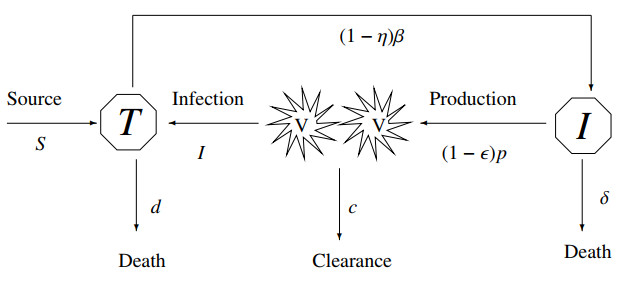
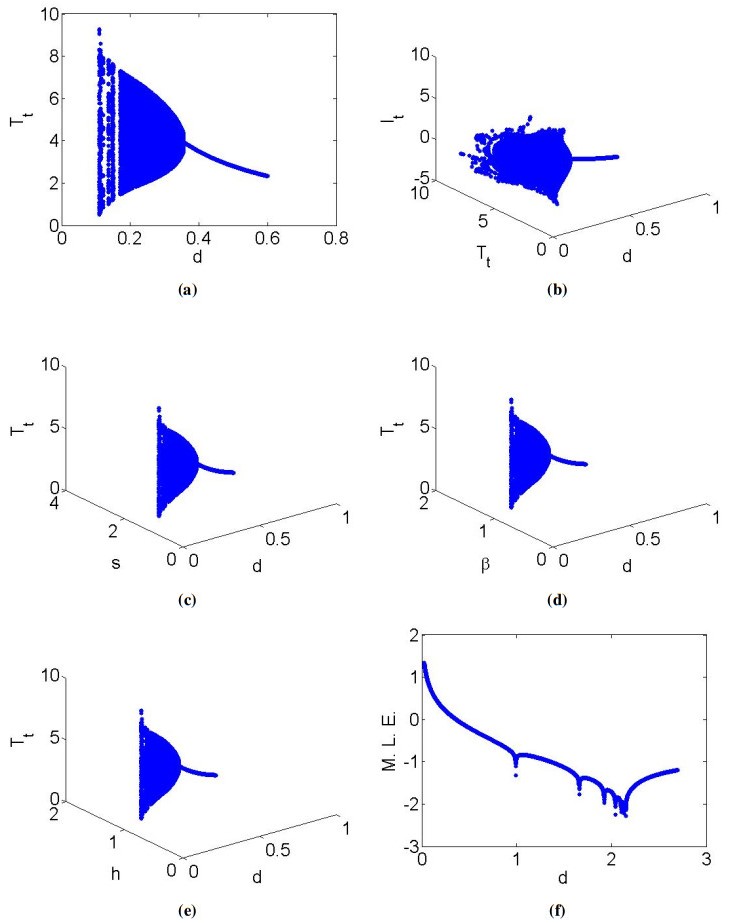
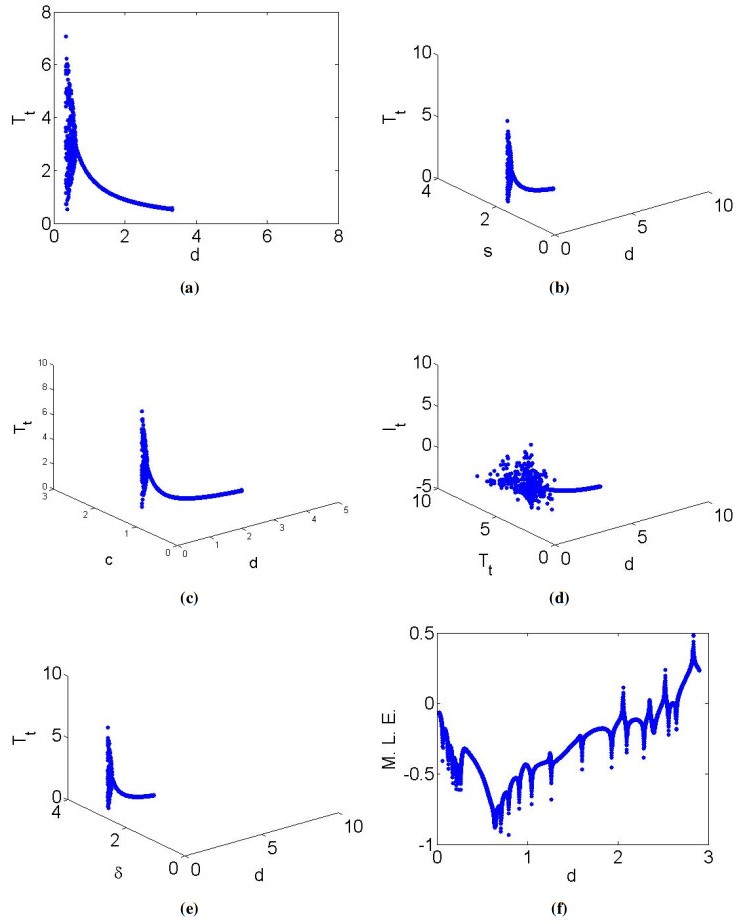
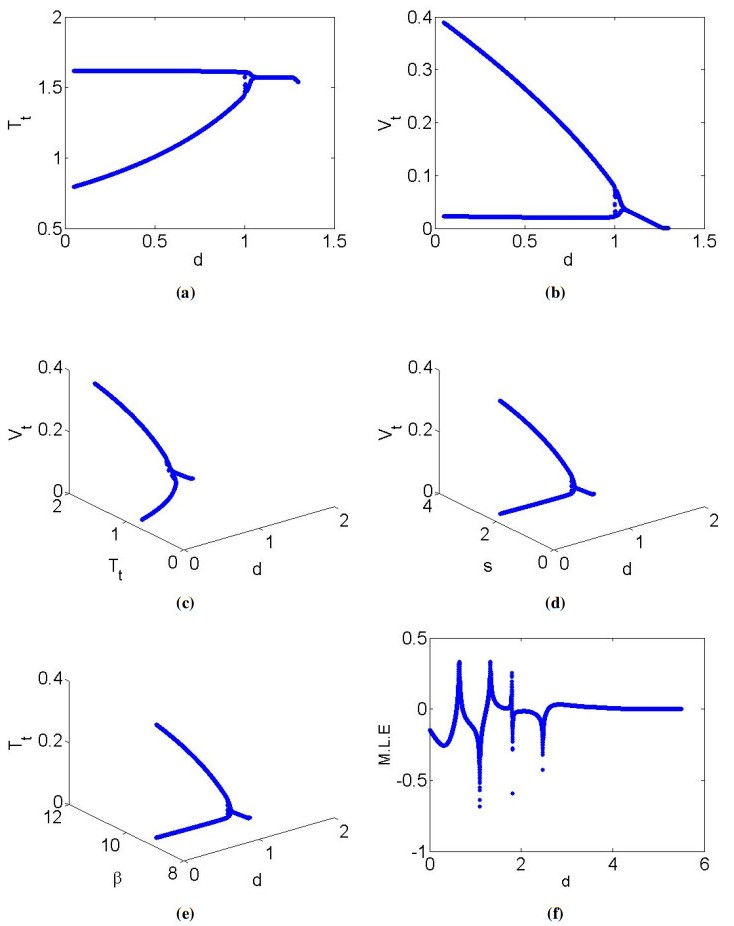
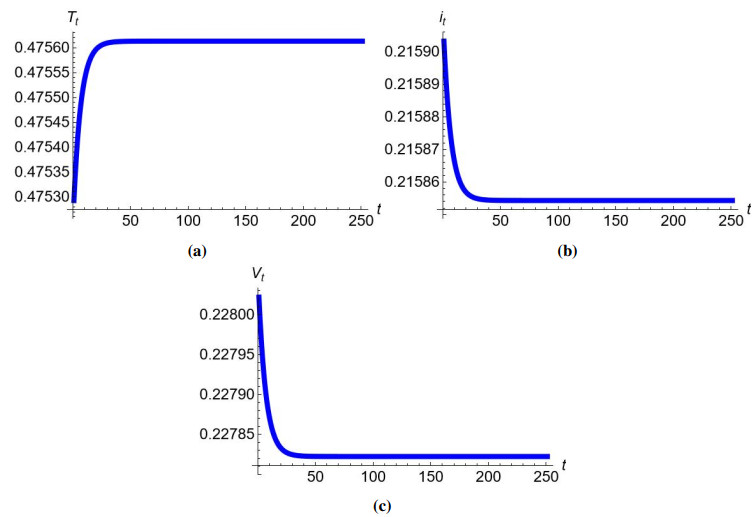


 DownLoad:
DownLoad: